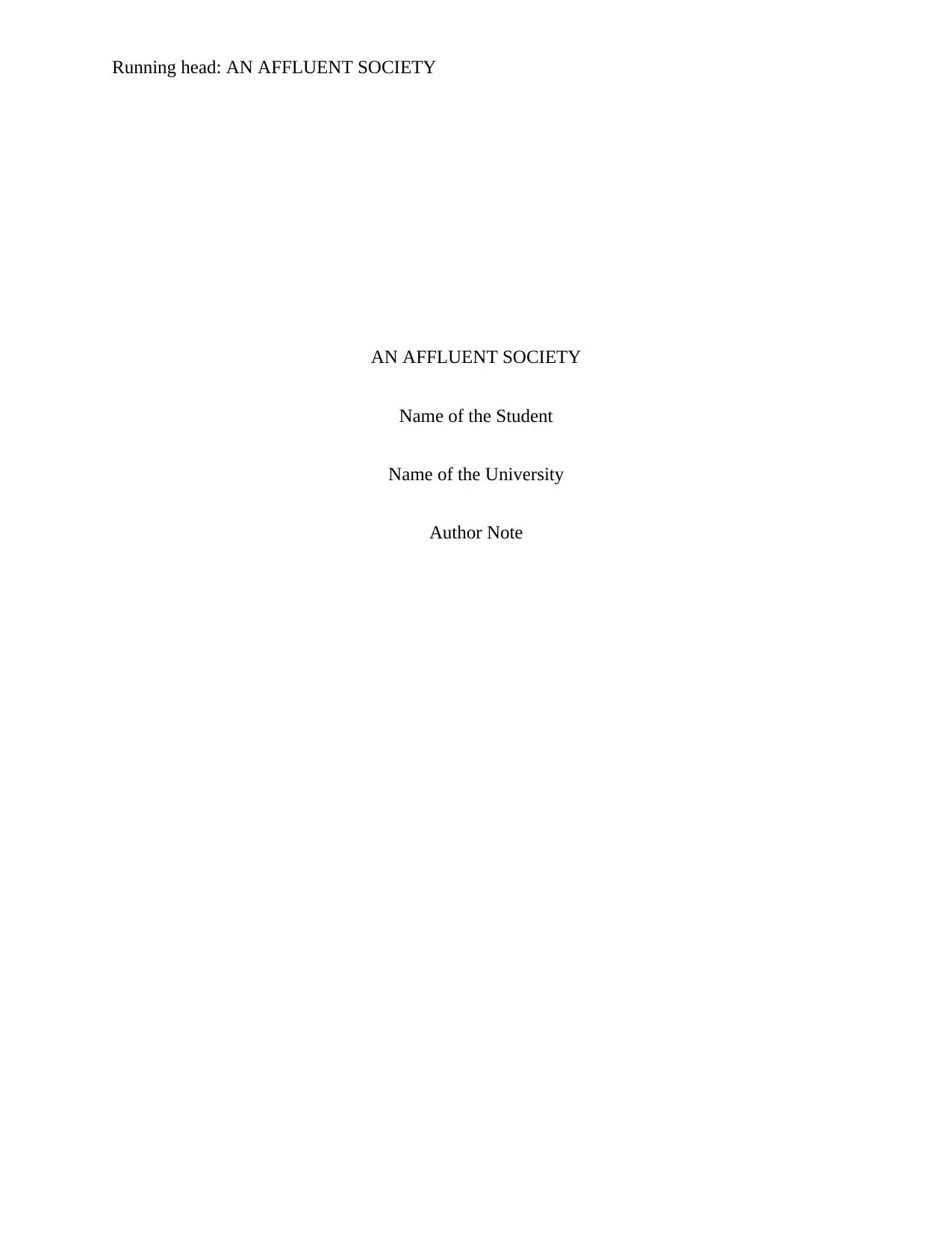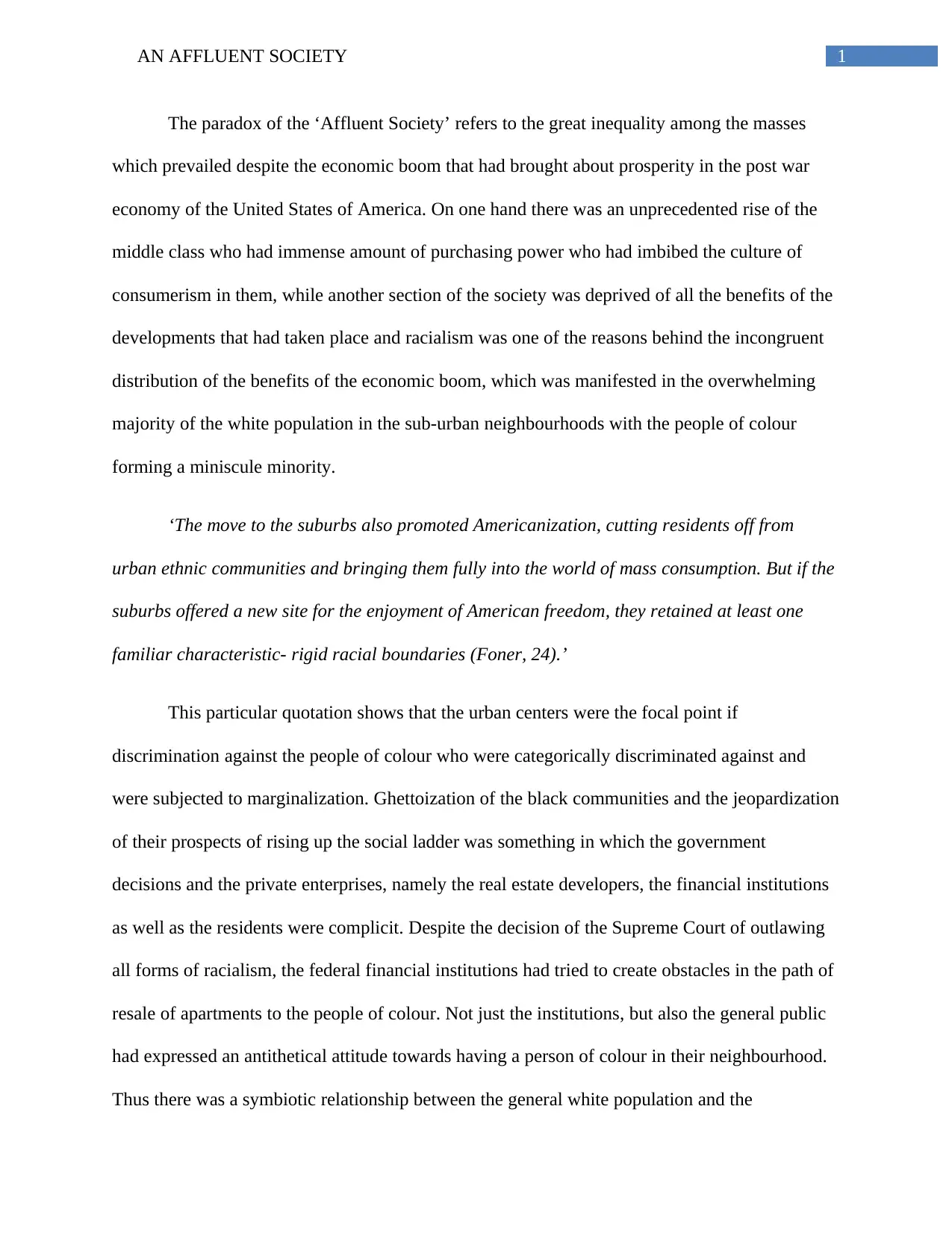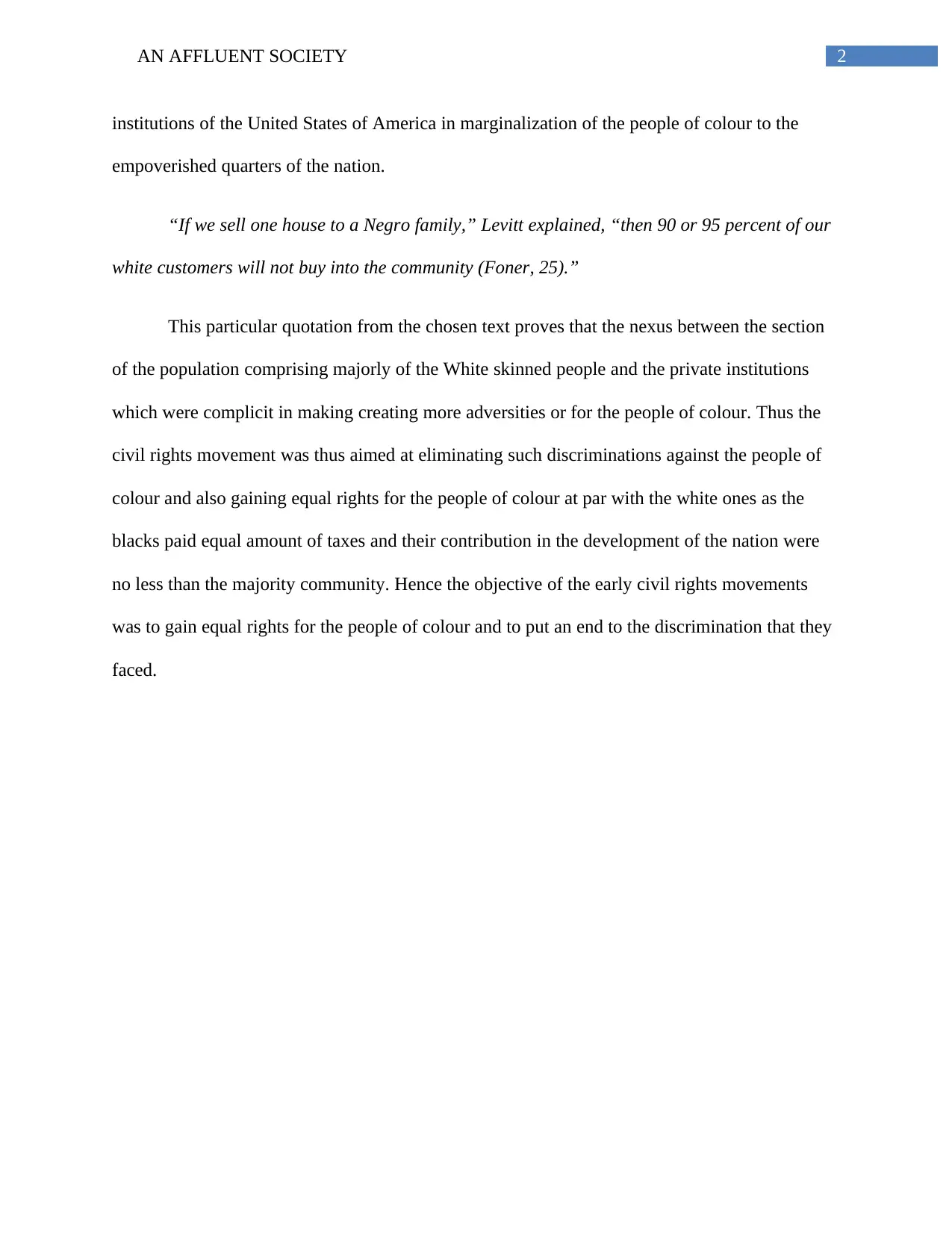Affluent Society: Analysis of Racial Discrimination
VerifiedAdded on 2022/11/25
|4
|584
|159
Essay
AI Summary
This essay analyzes the concept of the 'Affluent Society' in post-war America, highlighting the paradox of widespread prosperity alongside significant inequality, particularly racial discrimination. The essay examines how the economic boom primarily benefited the white middle class, while people of color faced systemic marginalization in housing and other areas. It explores the role of suburbanization, the actions of private institutions, and the complicity of the white population in perpetuating racial segregation and limiting opportunities for people of color. The essay references the works of Eric Foner to illustrate the challenges faced by the black population and the objectives of the early civil rights movement, which aimed to achieve equal rights and end discriminatory practices. The essay highlights the systemic nature of racial discrimination and its impact on the social and economic landscape of the United States during this period.
1 out of 4











![[object Object]](/_next/static/media/star-bottom.7253800d.svg)